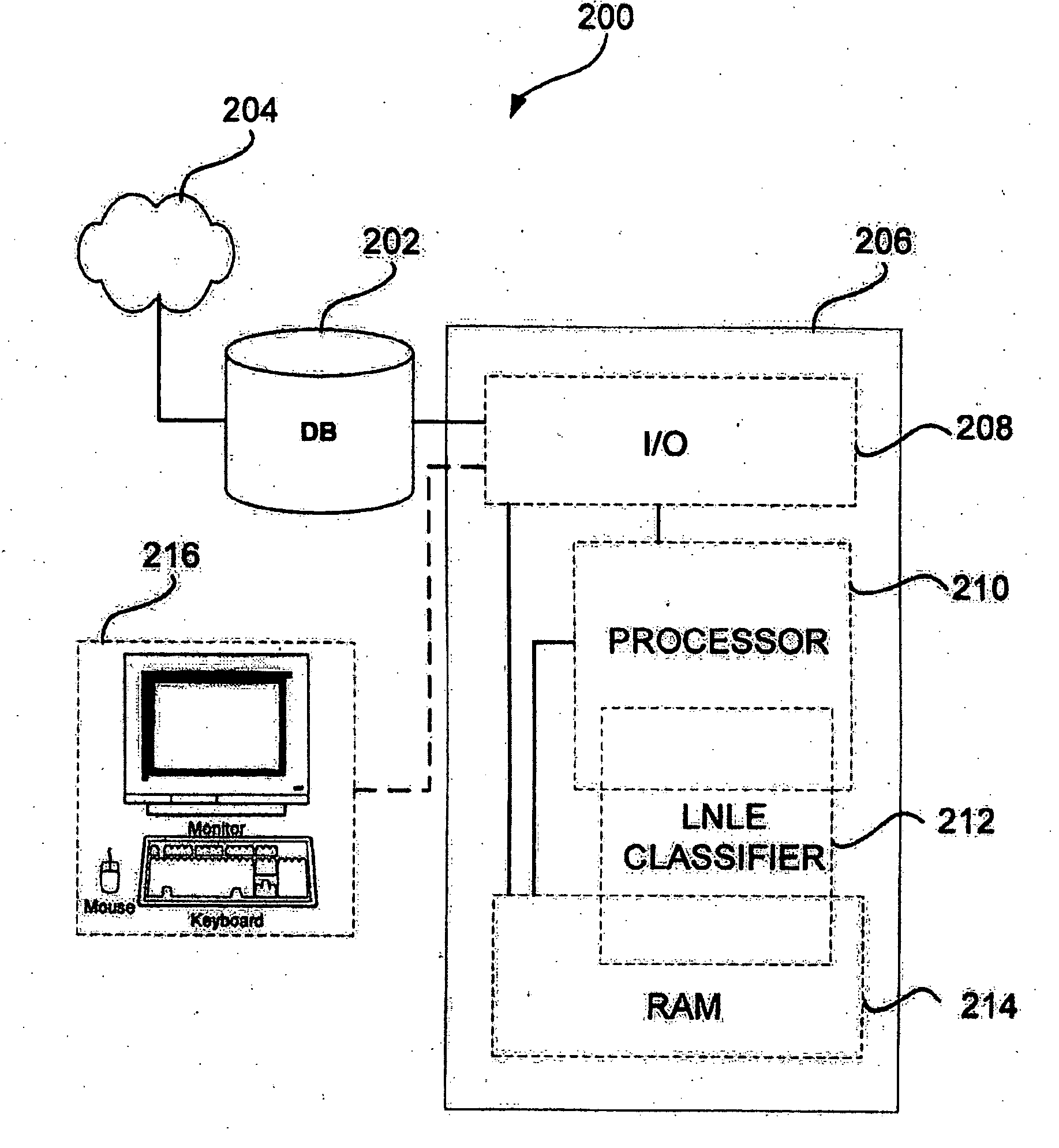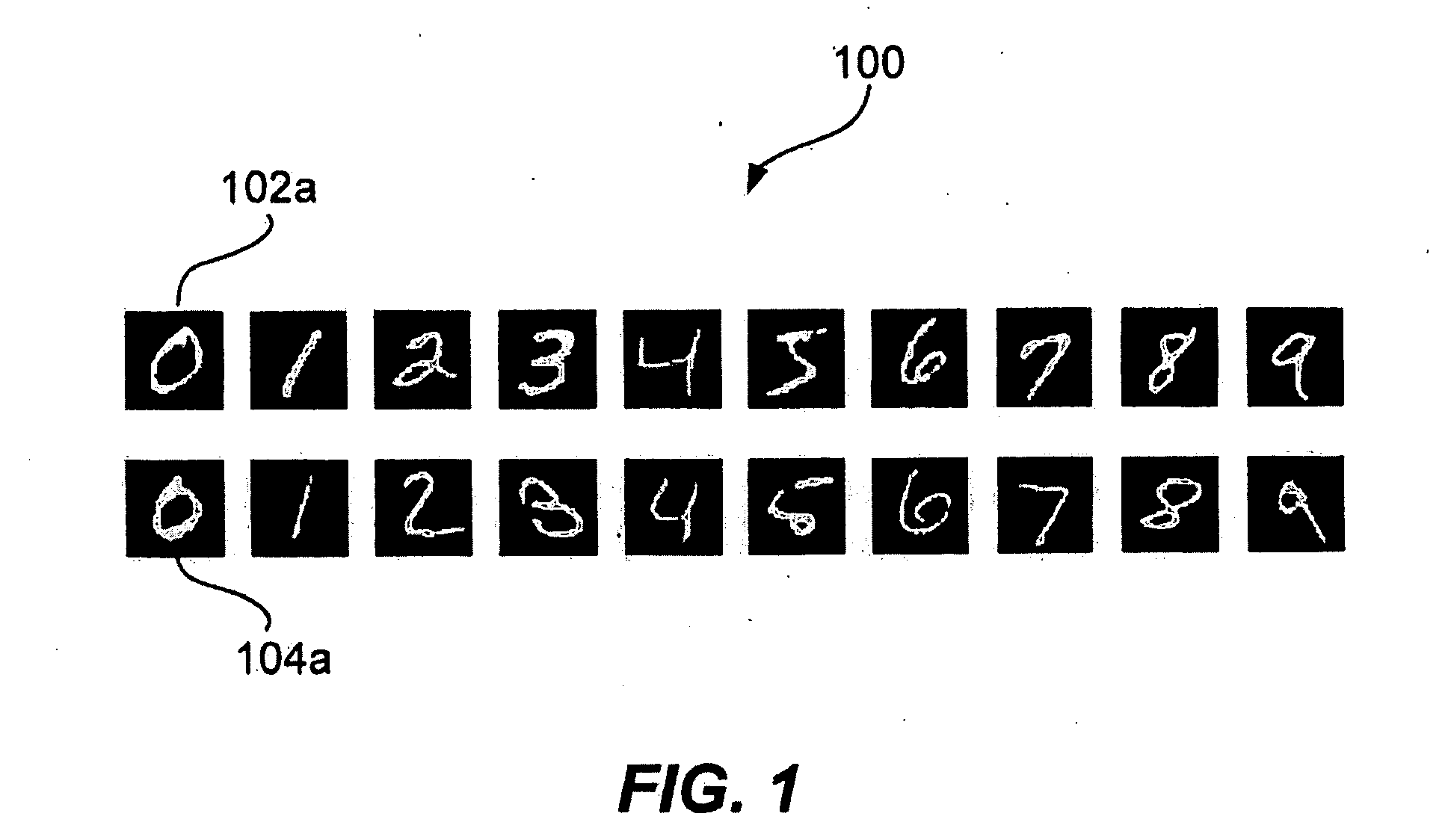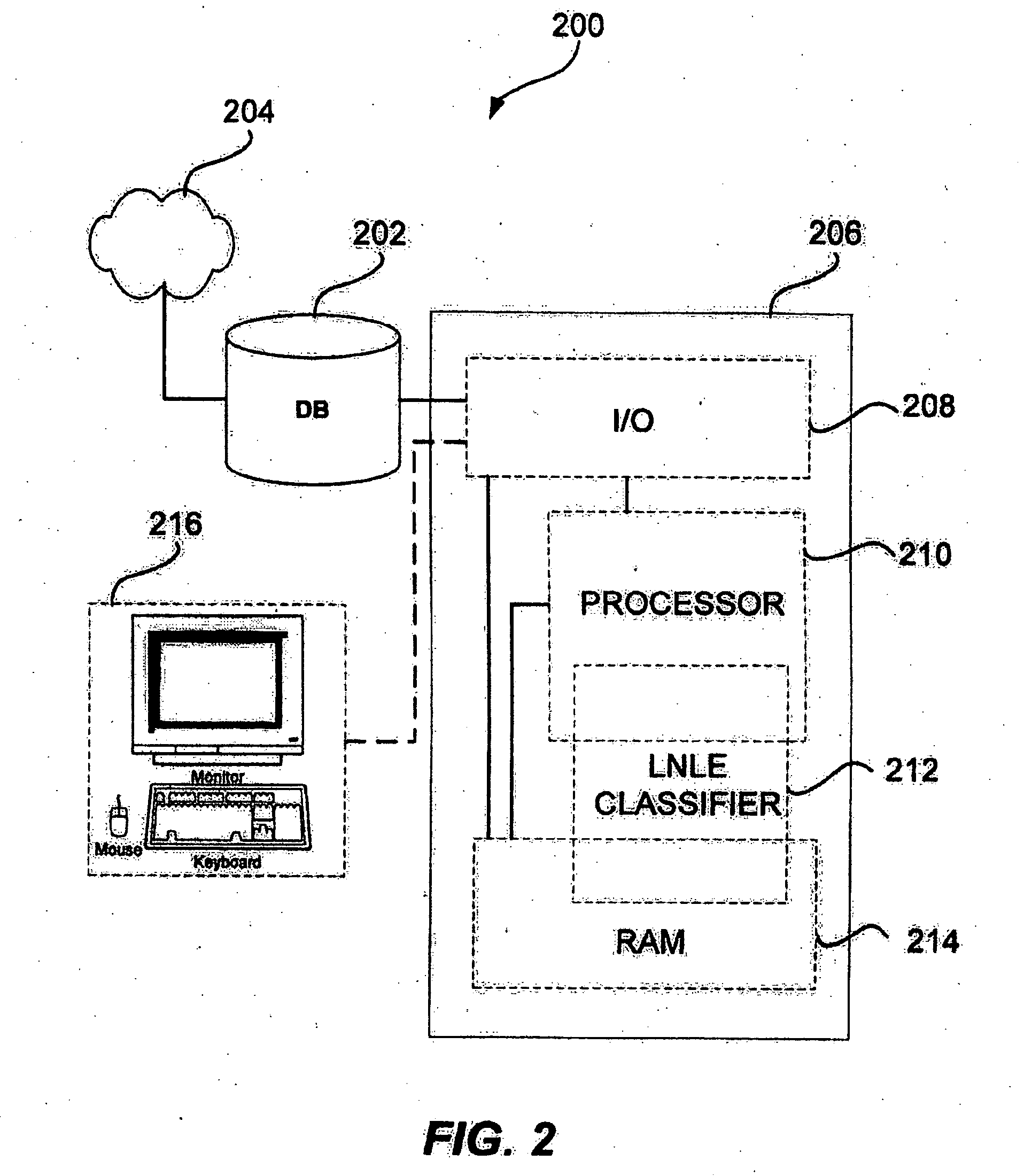Partially supervised machine learning of data classification based on local-neighborhood Laplacian Eigenmaps
a machine learning and local-neighborhood technology, applied in the field of machine learning, can solve the problems of large amount of data that is not very useful, learning begins and cannot make classification more difficult, and the ssii algorithm is not more accurate than the ti algorithm, so as to achieve the effect of fast ti and easy extension into an ssii algorithm
- Summary
- Abstract
- Description
- Claims
- Application Information
AI Technical Summary
Benefits of technology
Problems solved by technology
Method used
Image
Examples
Embodiment Construction
[0025] Throughout the following description labelled data points are referred to as nL and unlabelled data points are referred to as nU. A dataset n is thus defined as nL+nU. The letter y is used to denote the labels of the labelled data points nL. The term eigenpair is used to refer to an eigenvalue λ and its corresponding eigenvector v, and the magnitude of an eigenpair is defined as |(λ, v)|=|λ|.
[0026] Referring now to FIG. 2, a system block diagram illustrating a sample embodiment of a machine learning system is shown. The machine learning system 200 receives data units (e.g., data points nL and nU) from a data storage unit 202. The data units may belong to an existing dataset n, e.g., the MNIST dataset, or may be received from a data source 204 and stored in the data storage unit 202. For example, a data source 204 may include a digital imaging device (e.g., a camera, image sensor, or the like), a digital audio recording device, or other digital data capturing devices. Alterna...
PUM
 Login to View More
Login to View More Abstract
Description
Claims
Application Information
 Login to View More
Login to View More - R&D
- Intellectual Property
- Life Sciences
- Materials
- Tech Scout
- Unparalleled Data Quality
- Higher Quality Content
- 60% Fewer Hallucinations
Browse by: Latest US Patents, China's latest patents, Technical Efficacy Thesaurus, Application Domain, Technology Topic, Popular Technical Reports.
© 2025 PatSnap. All rights reserved.Legal|Privacy policy|Modern Slavery Act Transparency Statement|Sitemap|About US| Contact US: help@patsnap.com



